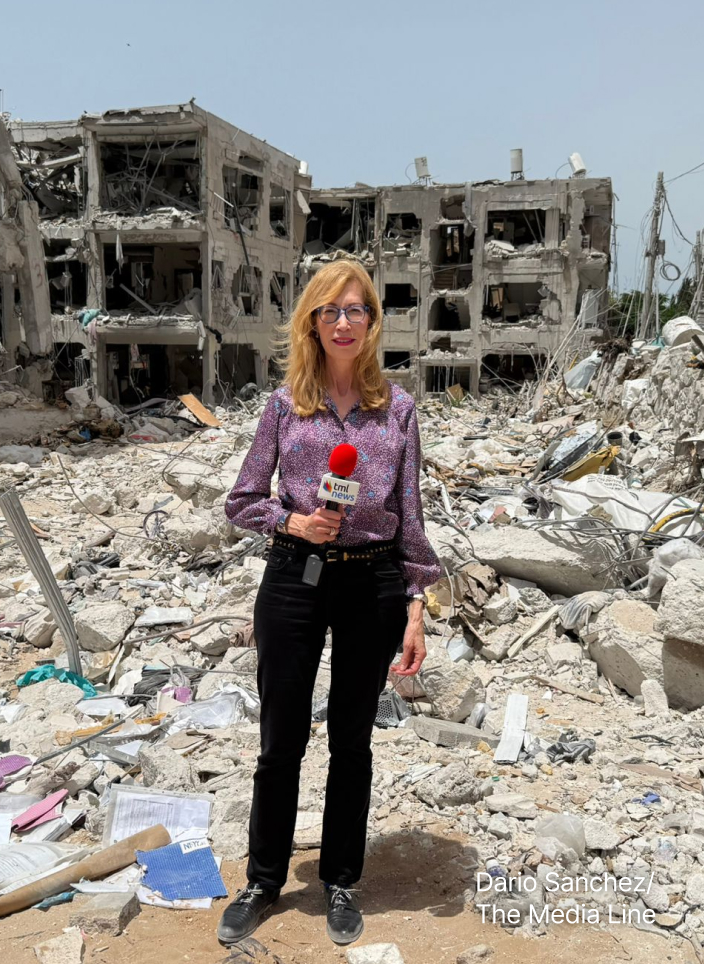Lingering Conflict Drives Thousands of Arab Men Out of Israeli Workforce
With over 22,000 Arab men still absent from the labor market, experts warn of growing socioeconomic gaps within Arab society as well as potential long-term impacts on Arab-Jewish relations in the Israeli workforce
The lingering effects of the war in Israel continue to shape the economic landscape for Arab Israeli workers. A study by the Israel Democracy Institute reveals that over 22,000 working-age Arab men who were employed before the conflict have not reentered the labor market as of July 2024. While employment rates for Arab women have fully returned to prewar levels, Arab men’s employment is struggling to recover.
Arab employment rates were rising steadily before the war, peaking in early 2023 at 78% for men and 45% for women. The conflict caused a sharp drop, with men’s employment falling to 54% and women’s to 36% in October 2023. While rates have partially recovered, Arab men’s employment remains lower than prewar levels, stabilizing around 72% by mid-2024, leaving many still out of work.
The construction sector has suffered significantly, with about 3,300 Arab workers still out of their previous jobs. Around 4,000 Arab employees in hospitality, food service, and financial services also have not returned to work.
Arab men working in Jewish communities were more severely affected, with 28% ceasing work after the October 7, 2023 attacks. Comparatively, 22% of Arab men in Arab communities stopped working during the conflict.
Why did they get out, and why are they not coming back?
Yarden Kedar, a researcher and coordinator of the future labor market project at the Israel Democracy Institute, told The Media Line that the study raises two crucial questions about Arab men’s labor market participation: “Why did they get out, and why are they not coming back?”
“They got out because, historically, Arab men—and the Arab population in general—are more susceptible to these kinds of crises,” Kedar said. “They have, on average, a lower education level compared to other populations and are heavily concentrated in sectors like construction that were hit particularly hard.”
In the conflict’s early stages, fear kept many Arab workers at home, Kedar noted, citing data from the Central Bureau of Statistics and the Bank of Israel. Fear of Arab-Jewish clashes, rocket fire, and other war-related impacts contributed to workforce absences.
“There was a lot of fear of friction between the Arab and Jewish populations. Many people didn’t want to leave their houses, and that’s why they didn’t get to their workplaces,” he explained. “But when we look at July [2024], we see that while many Arab women have returned to work, a significant number of Arab men still have not.”
Give the gift of hope
We practice what we preach:
accurate, fearless journalism. But we can't do it alone.
- On the ground in Gaza, Syria, Israel, Egypt, Pakistan, and more
- Our program trained more than 100 journalists
- Calling out fake news and reporting real facts
- On the ground in Gaza, Syria, Israel, Egypt, Pakistan, and more
- Our program trained more than 100 journalists
- Calling out fake news and reporting real facts
Join us.
Support The Media Line. Save democracy.
While the study did not delve deeply into Arab women’s employment, Kedar suggested their smoother recovery is linked to their concentration in sectors such as education and healthcare, which were less affected than predominantly male industries like construction.
Kedar noted that the construction sector has yet to fully recover, leaving many older Arab men unemployed and struggling to find new work. “They lack the skills to easily transition to other jobs, and we know from various studies that when older workers leave the market, it’s much harder for them to come back,” he said.
The lower employment rate among Arab men is significant. “We’re talking about more than 20,000 men who are providers for their families. Their absence means younger family members may need to step in financially, putting a burden on households and welfare systems,” he said.
When a large segment of the population, especially those with lower wages and education levels, doesn’t return to work, it creates a growing income gap within Arab society
Kedar expressed concern over rising income inequality within the Arab Israeli community. “When a large segment of the population, especially those with lower wages and education levels, doesn’t return to work, it creates a growing income gap within Arab society,” he said.
“We may not be able to single out a specific economic effect, but the societal impact—on families, income distribution, and older generations—will be felt for years,” he added.
Dr. Nasreen Haddad Haj-Yahia, a leading researcher on Arab Israeli society, highlighted that “quite a few violent incidents” against Arab men on construction sites have made it difficult for them to feel safe returning to work. “I believe this is related to the tension that exists between Jews and Arabs in the country,” she told The Media Line.
In the long term, she warned, this dynamic could lead to increased isolation of Arabs from the Israeli economy.
I hope the government, or perhaps NGOs and future administrations, will work harder to integrate Arabs into the economy and address Jewish-Arab relations in the workforce
“I hope the government, or perhaps NGOs and future administrations, will work harder to integrate Arabs into the economy and address Jewish-Arab relations in the workforce. But integration alone isn’t enough; we need to give Arab society a feeling of belonging and safety within the workforce,” she said.
She praised organizations like Co-Impact, which collaborate with companies to boost Arab employment rates and manage diverse workplaces effectively.
“The government and philanthropic organizations should provide more resources to support these efforts,” she said. “It’s about empowering both Arabs and Jewish employers to create a cohesive, respectful environment.”
Haj-Yahia anticipates that most unemployed Arab men in their 30s and 40s will eventually return to work once the conflict ends. “But for those who just finished high school and have no experience working with Jews, it’s a long-term risk,” she said. “These young people could be pulled into crime organizations, which might offer them opportunities that normative life doesn’t provide. We know from research that when young people have no pre-crisis experience, they’re very hesitant to engage after the crisis ends.”
“We need to do everything possible to give these young people the tools and opportunities within normative companies and workplaces,” she urged. “Otherwise, crime could become an alternative, and that’s a dangerous path.”



